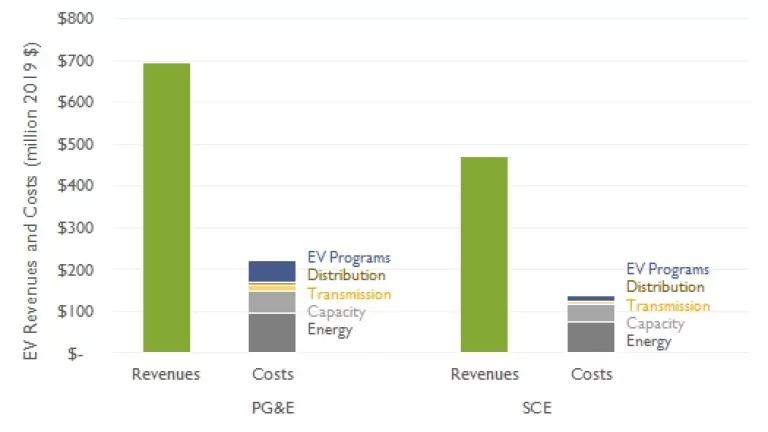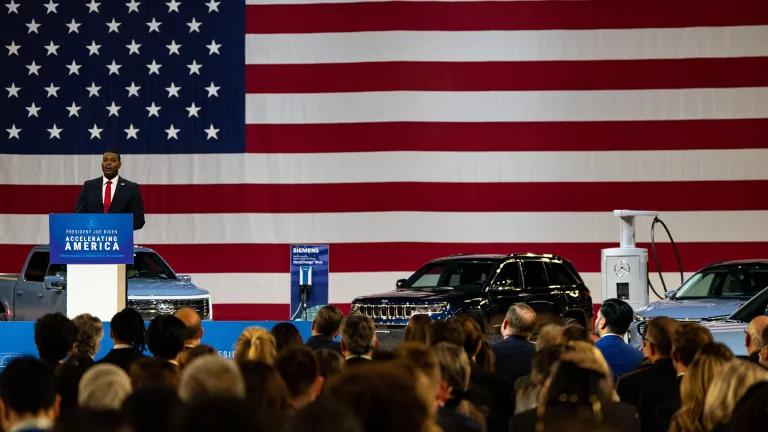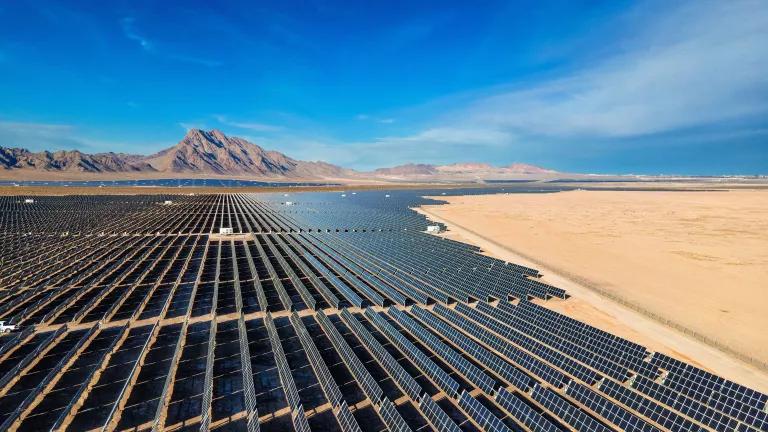Electric Vehicles Are Driving Rates Down
Real-world data demonstrates that EV drivers are contributing more to body of utility customers than associated costs, putting downward pressure on electric rates to the benefit of all utility customers.

Can the addition of more electric vehicles (EVs) to the grid actually lower utility bills for all customers? A recently updated study demonstrated just that, showing that EV drivers are not being subsidized by other customers and, in fact, they are putting downward pressure on rates. Between 2012 and 2019, in the two utility service territories with the most EVs in the United States, EV customers have contributed more than $800 million in net-revenue to the body of utility customers.
Because the transportation sector is the nation’s largest source of climate-warming pollution and a major source of dangerous local air pollution, it’s a sector we must transform to avoid the worst effects of climate change and protect public health. Put simply, this requires widespread adoption of electric cars, trucks, buses, etc. powered by electricity increasingly generated from emissions-free resources like wind and solar.
The EV Story
There’s a misconception that widespread charging of EVs will necessarily stress the electric grid, resulting in costly upgrades that drive up electric rates. However, analysis of the two utility service territories with the most EVs of any in the U.S., Pacific Gas & Electric (PG&E) and Southern California Edison (SCE), conducted by Synapse Energy Economics found the opposite has been observed in the real world—EVs are pushing electric rates down, largely because they tend to charge overnight when people are sleeping and there is plenty of spare capacity on the grid. EV customers on time-of-use (TOU) rates, only do 9-14 percent of their charging during on-peak hours when total demand for electricity is at its greatest. And even EVs that remain on default rates that do not encourage off-peak charging consume less electricity during on-peak hours than typical households (though, as my colleague, Pamela MacDougall explains here, we still need to move those folks onto time-of-use rates that increase fuel cost savings by rewarding off-peak charging).
Because EVs are not straining the grid to this point, there’s little marginal cost associated with accommodating EV charging, but significant new revenues (money that would otherwise go to oil companies) that is returned to all customers in the form of lower rates and bills.
How Do EVs Impact Electricity Rates?
Synapse evaluated the revenues and costs associated with EVs from 2012 through 2019 in the PG&E and SCE service territories. They compared the new revenue the utilities collected from EV drivers to the cost of the energy required to charge those vehicles, plus the costs of any associated upgrades to the distribution and transmission grid and the costs of utility EV programs that are deploying charging stations for all types of EVs.
In total, EV drivers contributed an estimated $806 million more than the associated costs. And this finding is not merely a result of the fact most EV drivers in PG&E and SCE territory remain on default rates and pay high upper-tier prices as a result. Even if 3 in 4 were on time-of-use rates designed for EVs, those drivers would still have provided approximately $621 million in net-revenues.
You might assume that utility shareholders kept that extra $806 million, but thanks to an accounting mechanism known as “revenue decoupling” that money is automatically returned to utility customers in the form of lower rates and bills. In states that have yet to adopt revenue decoupling, there may be a lag between utility rate cases, but EV charging should still put downward pressure on rates to the benefit of all customers.
From Theory to Reality
Numerous studies have found that widespread EV adoption could push utility rates down in the future in states across the union. For example, MJ Bradley and Associates conducted analysis concluding that levels of EV adoption consistent with meeting long-term climate goals could potentially reduce utility bills in Minnesota by $10.2 billion by 2050. What the recently updated Synapse analysis reveals is that we are on track to realize the future benefits quantified in studies the like Minnesota report. Because Synapse examined the two utility service territories with the most EVs of any in the US, the analysis provides a promising view of the future in states like Minnesota where the EV market is still nascent today.
We are clearly moving in the right direction, but more resources need to be put into programs that increase EV adoption and ensure EV charging is done in a manner that supports the grid. With this study, we’ve seen firsthand the real-world downward pressure on rates that EVs are providing. A future filled with electric vehicles zooming around on American roads promises to be one in which the air is cleaner to breathe, consumers are no longer vulnerable to the vagaries of the world oil market, and utility customers pay less out of their pockets for their electric bills.
Thanks to Emily Deanne from NRDC for her contributions to this blog.


